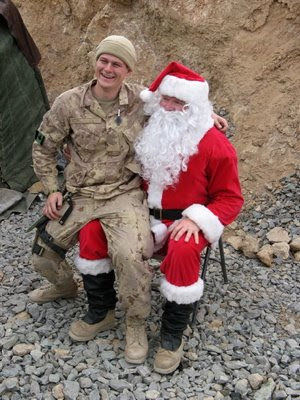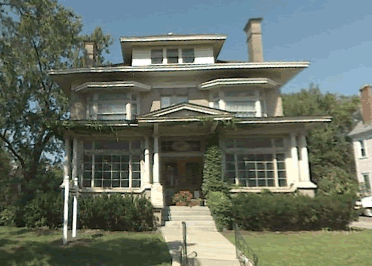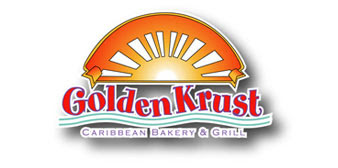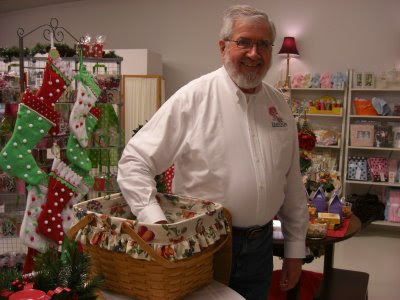Dec 31, 2008
Street Rod Status...
A Delightful Dinner...
Mary Ann and I have a house guest staying with us this week. Macie Rorabaugh, a friend from Waukee, Iowa, flew down a couple days ago and is staying through Friday. She and Mary Ann worked together back in Iowa several years ago and became good friends. In 2005, Macie accompanied us on the Great Race that went from Philadelphia to San Rafael, CA.
On Monday, we went to see The Curious Case of Benjamin Button (HIGHLY RECOMMENDED!) and followed this up with a Huntsville Havoc hockey match (The Knoxville Ice Bears beat the Havoc 5-2). Yesterday was cooking day.
Mary Ann and I have been long-time friends of "Microwave Dave" Gallaher, a Huntsville-based blues musician. We thought it would be fun to have Dave come to dinner while Macie was visiting. He graciously accepted, so Macie and I prepared a meal that turned out to be extraordinary -- one where everything turns out a little better than you expected.
The menu:
- Roast pork tenderloin encrusted in a lemon-parmesan-panko crust and served with a garlic cream gravy
- Prosciutto and parmesan wrapped asparagus tips
- Garlic mashed potatoes
- Parisian salad
- Homemade cranberry-blueberry bread
- Vanilla ice cream with warm cherry topping
- Fresh Colombian coffee
 The food was great but the company and conversation were even better. Be sure to visit Dave's Web site. Better yet, buy a couple of his CD's and really enjoy his music.
The food was great but the company and conversation were even better. Be sure to visit Dave's Web site. Better yet, buy a couple of his CD's and really enjoy his music.
Dec 25, 2008
Dec 23, 2008
Christmas Eve at Louie's...
 When I was growing up in Schenectady, I worked part time pumping gas. I worked for Louie Brzoza, who owned a Sunoco service station at 844 Union Street. It was an odd little place for several reasons.
When I was growing up in Schenectady, I worked part time pumping gas. I worked for Louie Brzoza, who owned a Sunoco service station at 844 Union Street. It was an odd little place for several reasons.Dec 20, 2008
The Drumroll, Please...
Today we held our first annual Christmas drawing at Ebabe's Gifts. We gave away a gorgeous Christopher Radko® Winter Wonderland snowglobe valued at $125. Here is Debbie Galliart stirring up the entries
Dec 18, 2008
A Christmas Poem...

I gazed round the room and I cherished the sight.
My wife was asleep, her head on my chest,
My daughter beside me, angelic in rest.
Outside the snow fell, a blanket of white,
Transforming the yard to a winter delight.
The sparkling lights in the tree I believe,
Completed the magic that was Christmas Eve.
My eyelids were heavy, my breathing was deep,
Secure and surrounded by love I would sleep.
In perfect contentment, or so it would seem,
So I slumbered, perhaps I started to dream.
The sound wasn't loud, and it wasn't too near,
But I opened my eyes when it tickled my ear.
Perhaps just a cough, I didn't quite know, Then the
sure sound of footsteps outside in the snow.
My soul gave a tremble, I struggled to hear,
And I crept to the door just to see who was near.
Standing out in the cold and the dark of the night,
A lone figure stood, his face weary and tight.
A soldier, I puzzled, some twenty years old,
Perhaps a Marine, huddled here in the cold.
Alone in the dark, he looked up and smiled,
Standing watch over me, and my wife and my child.
'What are you doing?' I asked without fear,
'Come in this moment, it's freezing out here!
Put down your pack, brush the snow from your sleeve,
You should be at home on a cold Christmas Eve!'
For barely a moment I saw his eyes shift,
Away from the cold and the snow blown in drifts.
To the window that danced with a warm fire's light
Then he sighed and he said 'Its really all right,
I'm out here by choice. I'm here every night.'
'It's my duty to stand at the front of the line,
That separates you from the darkest of times.
No one had to ask or beg or implore me,
I'm proud to stand here like my fathers before me.
My Gramps died at ' Pearl on a day in December,'
Then he sighed, 'That's a Christmas 'Gram always remembers.'
My dad stood his watch in the jungles of ' Nam ',
And now it is my turn and so, here I am.
I've not seen my own son in more than a while,
But my wife sends me pictures, he's sure got her smile.
Then he bent and he carefully pulled from his bag,
The red, white, and blue... an American flag.
I can live through the cold and the being alone,
Away from my family, my house and my home.
I can stand at my post through the rain and the sleet,
I can sleep in a foxhole with little to eat.
I can carry the weight of killing another,
Or lay down my life with my sister and brother..
Who stand at the front against any and all,
To ensure for all time that this flag will not fall.'
' So go back inside,' he said, 'harbor no fright,
Your family is waiting and I'll be all right.'
'But isn't there something I can do, at the least,
'Give you money,' I asked, 'or prepare you a feast?
It seems all too little for all that you've done,
For being away from your wife and your son.'
Then his eye welled a tear that held no regret,
'Just tell us you love us, and never forget.
To fight for our rights back at home while we're gone,
To stand your own watch, no matter how long.
For when we come home, either standing or dead,
To know you remember we fought and we bled.
Is payment enough, and with that we will trust,
That we mattered to you as you mattered to us.'

Dec 12, 2008
Dec 6, 2008
Dec 2, 2008
Loss of a Wonderful Lady...

I recently completed an assignment at a manufacturing facility on Long Island. From my first day on the job I noticed that the cafeteria was a very well run operation. The food was wholesome and reasonably priced, the menu was varied and appealing, but these are the things you expect. The difference in this cafeteria was the attitude of the staff. Everyone was outgoing, friendly, and extremely proud of what they were doing. It made all the difference in the world!
Nov 20, 2008
Nov 18, 2008
Grass...

I grew up in a house on a large corner lot, the corner of Union Street and Gillespie Street in Schenectady, New York. My older brother Bill and I had two major duties -- cutting the grass in the summer and shoveling snow in the winter. We tried various ways of dividing up the work and no matter how we split things up each of us was convinced that the other one got the best deal.

Nov 16, 2008
Nov 9, 2008
Another Great Organ Story...
Nov 7, 2008
An Organ Story...
 Before there was "stereo" there was "high fidelity." In the 1950's, we got our first "hi-fi" or audiophile store in Schenectady -- the "House of Harmony" at 1444 State Street. Remember that it was a city of nerds, with hundreds of engineers and technically savvy craftsmen, the home of General Electric and the American Locomotive Company -- "The city that lights and hauls the world!" The hi-fi store was an immediate success. It was owned by a young fellow named Bob Griswold, the son of a prominent funeral director. I and my technically-oriented buddies became regular visitors to the store.
Before there was "stereo" there was "high fidelity." In the 1950's, we got our first "hi-fi" or audiophile store in Schenectady -- the "House of Harmony" at 1444 State Street. Remember that it was a city of nerds, with hundreds of engineers and technically savvy craftsmen, the home of General Electric and the American Locomotive Company -- "The city that lights and hauls the world!" The hi-fi store was an immediate success. It was owned by a young fellow named Bob Griswold, the son of a prominent funeral director. I and my technically-oriented buddies became regular visitors to the store. 
The second organ was a Wurlitzer that Bob acquired from a theater in Utica, New York.
Bill purchased the large organ from Bob Griswold who removed the instrument from the theatre in the early 1950's and installed it in his
The installation in the former Viking Theatre was completed with the help of Leonard Vernon and Dick Chase. Leonard Vernon did the refinishing job on the console.
Bill had hoped that the Viking would be a permanent home for the organ, but in 1964, the building was sold and on May 17, 1964, a final concert was held.
The 5/24 was removed shortly thereafter. During the Fall of 1965, Bill moved the organ to
It was removed from this location and is currently in storage in the
Nov 5, 2008
Historic Times...

We have witnessed a remarkable moment in the history of this great nation. Let's unite in support of our newly-elected President and offer him our prayers.
Oct 26, 2008
An Interesting Trip Back in Time...
 This weekend I drove to the Lake Champlain Maritime Museum near Vergennes, Vermont. As I mentioned in an earlier posting, I wanted to see the reproduction canal schooner Lois McClure, the type of boat my great-grandfather George Neddo built. I arrived at the museum around noon on Saturday only to learn that the canal schooner had been moved to Burlington a week earlier to be prepared for winter storage. I chose to stay at the Vergennes site for the rest of the afternoon and had a wonderful day of learning.
This weekend I drove to the Lake Champlain Maritime Museum near Vergennes, Vermont. As I mentioned in an earlier posting, I wanted to see the reproduction canal schooner Lois McClure, the type of boat my great-grandfather George Neddo built. I arrived at the museum around noon on Saturday only to learn that the canal schooner had been moved to Burlington a week earlier to be prepared for winter storage. I chose to stay at the Vergennes site for the rest of the afternoon and had a wonderful day of learning.
The museum focuses on all kinds of watercraft that have been important in the history of the lake and also on the importance of Lake Champlain in the history of our country. One exhibit that is especially important is the reconstructed revolutionary gunboat Philadelphia II. The story that unfolded for me is worth retelling.
 Amazingly, she was preserved by the cold pure waters of Lake Champlain (in an era prior to the presence of zebra mussels) and was located and salvaged in 1935, some 169 years after being sunk! Her description is given in the nomination for designation as a National Historic Site: "The Philadelphia's hull is 54 feet in length, 15 feet in beam and approximately five feet deep. Construction was almost entirely of oak and sap still remained in the bottom planking. The mast, almost 36 feet high, was found intact except for the top portion, and the hull timbers were still in place. Three shot holes were visible in the hull and in one of them a cannon ball was lodged. Considering the punishment it took in battle and its long years underwater, the Philadelphia is an exceptionally well-preserved survivor of this important Revolutionary War naval battle." The Philadelphia is now on exhibit at the Smithsonian -- the only surviving vessel that participated in the American revolution.
Amazingly, she was preserved by the cold pure waters of Lake Champlain (in an era prior to the presence of zebra mussels) and was located and salvaged in 1935, some 169 years after being sunk! Her description is given in the nomination for designation as a National Historic Site: "The Philadelphia's hull is 54 feet in length, 15 feet in beam and approximately five feet deep. Construction was almost entirely of oak and sap still remained in the bottom planking. The mast, almost 36 feet high, was found intact except for the top portion, and the hull timbers were still in place. Three shot holes were visible in the hull and in one of them a cannon ball was lodged. Considering the punishment it took in battle and its long years underwater, the Philadelphia is an exceptionally well-preserved survivor of this important Revolutionary War naval battle." The Philadelphia is now on exhibit at the Smithsonian -- the only surviving vessel that participated in the American revolution.Oct 24, 2008
The Great Communicator... More Relevant than Ever

“Are you better off now than you were four years ago? Is it easier for you to go and buy things in the stores than it was four years ago? Is there more or less unemployment in the country than there was four years ago? Is
-- Ronald Reagan, 1980 Presidential Debate --
Oct 23, 2008
Oct 19, 2008
Follow Your Dreams...
Mary Ann's gift shop, Ebabe's Gifts, is now officially open. Saturday we welcomed our first customers.
Sep 28, 2008
Alice...

My father was no fool. When I turned 16, he knew I wanted a car in the worst way. My brother and I had worked in a service station for several years and had rebuilt several engines. My dad knew I was a gearhead and wanted a car. He offered me a deal. I could get any car I wanted and he would pay for half of it. I would have to pay for insurance, gas, and upkeep. Pretty simple terms.
The Flavor of Reggae...
 In the 1970's, while I worked in southern Mississippi, I had a black roommate named Charlie Carter. He introduced me to a whole lot of American culture that I probably would have missed, including the delight of barbequed goat. Today, for reasons unknown, I had a craving for Caribbean food, so I went on a goat quest.
In the 1970's, while I worked in southern Mississippi, I had a black roommate named Charlie Carter. He introduced me to a whole lot of American culture that I probably would have missed, including the delight of barbequed goat. Today, for reasons unknown, I had a craving for Caribbean food, so I went on a goat quest.Sep 18, 2008
One Man, Amazing Music...
Sep 13, 2008
Thwarted Plan...
 My great-grandfather George Neddo built canal boats in his Whitehall, New York, boatyard. The history of these commercial vessels is celebrated at the Lake Champlain Maritime Museum in Vergennes, Vermont. I had planned to visit there this weekend, but when I heard that hurricane Ike might be causing gasoline shortages, I decided not to go.
My great-grandfather George Neddo built canal boats in his Whitehall, New York, boatyard. The history of these commercial vessels is celebrated at the Lake Champlain Maritime Museum in Vergennes, Vermont. I had planned to visit there this weekend, but when I heard that hurricane Ike might be causing gasoline shortages, I decided not to go.One attraction of going to Vergennes is to go aboard the Lois McClure. The Lois McClure is an accurate reproduction of the kind of canal boats George Neddo built. She combines the size and shape of an 1860's canal boat (88 feet by 13 feet) with a schooner sailing rig that was used to cross open water.
 The boat was named after Lois McClure, the widow of the late J. Warren McClure, newspaper owner and well-known Vermont philanthropist. The McClures are legendary in Vermont for the millions they have contributed to charities in their state and beyond.
The boat was named after Lois McClure, the widow of the late J. Warren McClure, newspaper owner and well-known Vermont philanthropist. The McClures are legendary in Vermont for the millions they have contributed to charities in their state and beyond.The canal boat has been used as a traveling museum, recently touring a number of ports in Canada (Fitting, I might add, since the Neddos were really the Nadeaus, who had moved from Canada after George Neddo's father was charged with treason as a member of Papineau's Army in the 1830's. But that's a story for another time, eh?).
Sep 8, 2008
Highly Recommended!!!

I stayed home last week. A few months ago Mary Ann had given me DVDs of the HBO miniseries John Adams. We watched the whole series over the course of three nights. This is a fabulous work of art based on David McCullough's Pulitzer-prize-winning biography of our second president. I recommend it to all.
Aug 28, 2008
A Project for a Friend...
 Years ago, Tom Morgan, a skilled luthier from near Dayton, Tennessee, built me an autoharp of Brazilian rosewood and hundred-year-old spruce. It has since then been my favorite instrument (...and I've owned a lot of autoharps.). More recently, Tom brought me some Brazilian rosewood and spruce and asked me to build a dulcimer for him to give to a friend. I'll probably finish it this weekend.
Years ago, Tom Morgan, a skilled luthier from near Dayton, Tennessee, built me an autoharp of Brazilian rosewood and hundred-year-old spruce. It has since then been my favorite instrument (...and I've owned a lot of autoharps.). More recently, Tom brought me some Brazilian rosewood and spruce and asked me to build a dulcimer for him to give to a friend. I'll probably finish it this weekend.Aug 17, 2008
A "Relatively" Great Outing...
This weekend I stayed in New York and did some work on Saturday. This morning, I decided to check out a newspaper and just see what looked interesting to occupy the day. The resulting outing took me to the Summer Open House Series at the Brookhaven National Laboratory.
The event featured a tour of the Relativistic Heavy Ion Collider (RHIC). The people at the lab actually pronounce the acronym as if it were "Rick." This national research treasure is described on their Website as "a world-class scientific research facility that began operation in 2000, following 10 years of development and construction. Hundreds of physicists from around the world use RHIC to study what the universe may have looked like in the first few moments after its creation. RHIC drives two intersecting beams of gold ions head-on, in a subatomic collision. What physicists learn from these collisions may help us understand more about why the physical world works the way it does, from the smallest subatomic particles, to the largest stars."
The tour took us to the 2.6-mile main particle accelerator, as well as to the sites of two major experiments -- PHENIX (Pioneering High Energy Nuclear Interaction eXperiment) and STAR (Solenoidal Tracker At RHIC). The scale and complexity of these facilities are overwhelming.

We went underground into the tunnel that houses the accelerator. A staff physicist described the equipment, its origins, function, and purpose. He answered several questions ranging from "Is this tunnel radioactive?" to "How do you make sure no one is left in the tunnel before you activate the equipment?" We also saw a static display of a section of the "tube" that carries the ionic stream and the magnets that guide the beam. It must have been a challenging construction project, and we were informed that it was the only project in recent DOE history that was completed on time and within budget.
The experiments were both undergoing maintenance, so we were able to see their "innards." These are gigantic structures that normally surround a segment of the collider.

The facility is used to study high-energy subatomic particles. In a typical experiment, clusters of ionized gold atoms are accelerated in opposite directions to speeds of 99.995% the speed of light. They are then allowed to collide and disintegrate into thousands of subatomic fragments. The experimental equipment attempts to record the identity and paths of the constituent pieces. These are then studied by the experimenters to try to gain insight into what goes on at these energy levels and conditions. The results have surprised the researchers. The Website describes much more than I can describe here.

Needless to say, I was impressed. Almost exactly fifty years ago, I was a semi-finalist in the Westinghouse Science Talent Search as a result of my interest in the nature of subatomic particles. My project was the design of a liquid freon bubble chamber. That would have been the state-of-the-art way of observing subatomic particle tracks in 1958. Today, bubble chambers only exist in museums and memories. How times change!















